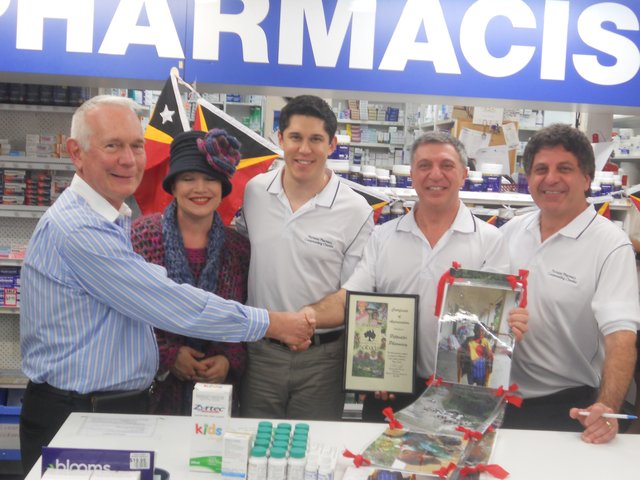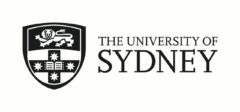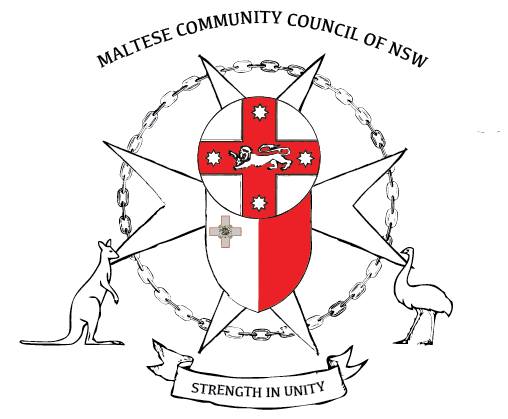
When initially contacting the Maltese Community Council of NSW (MCC), I knew very little about the organisation. Through my initial research of the organisation, I identified early on that there was a need for it to more publicly acknowledge their own achievements and history, which was lacking from the website. This project was created from discussion with the organisation and the specific needs they identified, including not having a physical document of central information to present to individuals at events. From this addressed need, the decision was made to develop a brochure to have a written description of major achievements. This would include roles, services, contact information and key achievements of the organisation. It was further discussed to make sure this document was as accessible as possible a copy would be placed on the website to be downloadable. Further, it was agreed that the key achievements would also be placed on the website under a created ‘history tab’.
In creating a timeline of key achievements for the organisation, the goal of the project was to draw attention to the history and significant work of the MCC. This can be summed up in the question I am attempting to answer with this project: What does the MCC’s history, development and work reveal about the impact this organisation, on the local Maltese Australian community as well as the international Maltese diaspora.
The key achievements timeline was established through use of various sources and verbal consultation with the key leaders of the organisation who have personal knowledge.
The detailed timeline of key accomplishments of the MCC draws mainly from key primary and secondary sources, including key documents, images and publications.
The importance of the MCC having historical connection gave it a deep sense of community, a link to the national migration narrative of Australia and familial connections. I felt it was important to write the history of this organisation, that continues to remain a significant feature of the Maltese community. Further, being acutely aware that I was an outsider to this community and organisation, I ensured that I continuously engaged and discussed with them throughout the project.
The impact of this project is due to the identified need that the organisation did not have an established timeline, and this project significantly addressed this issue by drawing attention to the organisation’s work and contribution over the decades. In creating this project, the goal was to allow the organisation to have wider reach and create something physical that can be utilised and passed on to future generations by the MCC. The importance of this project is that it addresses a key area in which the MCC was lacking.
The choice of media use in this project is specific to the organisation’s needs. The mediums identified for the project was both physical, in the brochure, as well as digital, including digitization of the brochure and establishment of a history page.
The brochure was chosen as it is a physical form that was needed by the organisation to be used at events, both cultural and governmental. The brochure was made to be a direct and effective medium to convey key information about the organisation. Further, the colour scheme chosen reflected the Maltese flag, being a key cultural reference. The layout also was specific to be able to convey as much information as possible in this one document, addressing key areas, of role, services, affiliated associations, contact information and achievements of the MCC. The brochure will be utilised at local events as well as internationally.
The website, including creating a ‘history tab’ and placing a downloadable version of the brochure on the website, makes the project more accessible to a wider audience. The timeline placed on the website also has accompanying primary sources, which enhance engagement and provide visuals to accompany the development and achievements of the organisation. These visual aids were to compliment the written text and were specifically chosen as key sources of the organisation’s key achievements.
Further, placing the document on the MCC’s social media, specifically their Facebook page, will again widened the reach of this project. Spreading the project to as many platforms as possible will allow for the widest reach of this information in addressing the key goal of spreading the achievements and history of the MCC, including hopefully to younger generations of descendants.
A further major factor to consider in developing this project was sustainability. In designing this brochure and the inclusion of the timeline, this document can continually be updated by the organisation. Further, by establishing the history tab and adding the initial timeline, it will become another source by which the MCC will continue to add digitally achievements, historical information and sources, as they now have an established place to do this.
The strength of this project is that it arose from engagement with the MCC and though discussion of what would benefit the organisation. This was when the brochure was specifically identified. Further, the need for the organisation to enhance their digital presence was also discussed in the initial meeting, so the proposal of also including the website and social media was suggested. Due to these factors, the project was framed around the need to enhance awareness of the achievements and history of the organisation. The project serves the organisation’s identified needs as well as being able to be continue and sustain the organisation into the future. This project’s ultimate aim was to highlight to various audiences the key historical achievements and ongoing commitment and service of the MCC to the Maltese Australian community.
Links:
MCC NSW Website – Downloadable Brochure https://mccnsw.org.au/main/page_about_us.html
MCC NSW History Tab https://mccnsw.org.au/main/page_history.html
MCC NSW Facebook Page https://www.facebook.com/groups/1526025277656567/
Month: November 2018
A 1st Innings Declaration
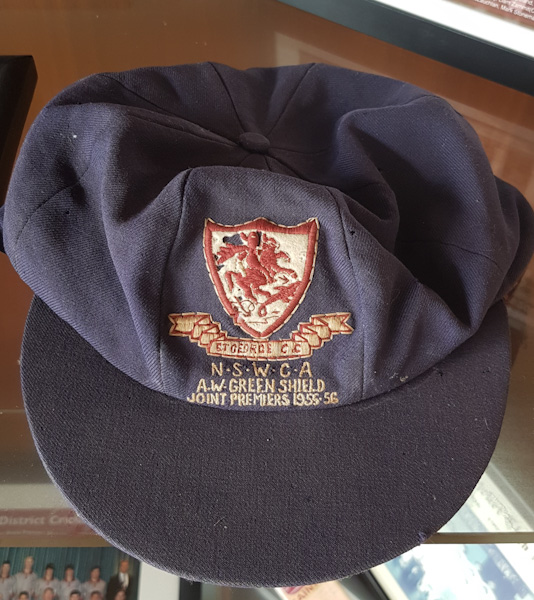
For my project I have taken on a number of tasks with the St. George District Cricket Club. What started out as a cataloguing of historical artefacts turned into an online museum, a brochure, and a report for the clubs committee. The club had been wanting to compile a record of the items in its collection for some time but had not had the time or resources for it to be completed. It was clear to me that this was an area where the club required assistance. Consequently, I took on the role of recording information with some assistance from Mr Ronald Cardwell. Mr Cardwell has worked with the club for around 40 years in recording certain parts of its history. His information was very valuable in the work which was completed.
Within the glass cabinets of the Booth-Saunders Pavilion, where many of the artefacts are kept, we took note of 168 items of historical significance. These items included things such as cricket caps, signature cricket bats, framed items, photographs of successful teams, blazers, and various cricketing trophies. The pavilion also houses an office space with a library of various books relating to cricket. Within the library, we took note of 121 books related to cricket, with approximately one-third written in relation to members of the St. George District Cricket Club. Most significant was a book written of the history of the club for its centenary, titled A Century of Achievement: The Players and People of the St George District Cricket Club. This book was the main source of information for many of the items and people within the club. Without this book written by Mike Coward, the research and writing of this project would have been significantly more difficult.
From this collection of data, I elected to create an online museum with some of the more notable items from the collection (Which can be found at https://stgeorgehistory.wixsite.com/museum). This would involve uploading images of the items and providing information for the item, or the person involved with the item. The plan for this online museum is to grow larger if more artefacts are found and if it is something that the club finds valuable. I am more than willing to continue work for this into the future. The online museum is a really valuable historical resource as it enables people who may not be able to travel to Hurstville Oval to see the items on display. It also allows people to gain more knowledge of the items in the collection. Within the Booth-Saunders Pavilion there is very little information regarding the artefacts. The museum provides a space for locals and regulars to also become educated about the history of the club through these items. Ideally, if some funding can be secured, the museum would be able to be linked to the main St. George District Cricket Club Website. A custom URL would also be attainable, as well as the removal of website creator ads from the website.
In conjunction with Mr Cardwell, I also put together a report which is planned to be submitted to the St. George District Cricket Club committee. The report outlines the work I have been undertaking as well as making some recommendations. The recommendations made in the report regard the preservation of the historical items in the club’s collection, as well as for improvements in storage and display. The overall argument that I have attempted to develop is the importance of physical artefacts to the club. I have also created a brochure which will be circulated with the aim to attain more items of historical note to the club. This brochure is an attempt to expand the collection of the club as well as reconnect with former players. These items are incredibly important in preserving the history of the club for future generations to observe. This preservation of items will benefit the club, the community, and the families of past players, as even when they pass away their memories will still be associated with the club. It will provide an opportunity for future generations to understand how the game of cricket has changed over time and how it has also stayed the same.
In all of the tasks I undertook with the club, my aim was to ensure that the history was at the front of what I was doing. With the online museum, I provided information with each photograph; a story to go alongside the item. These stories help to explain the historical significance of the items, distinguishing themselves from being just another cricket cap, or just another trophy. The report centres around the historical nature of the cricket club and the significance that holds today to both players and former members. Even the round previews are a look into the short-term playing records of the club. A history of the current decade of cricket played by St. George. This project has fuelled my interest in the history of the club, but also in public history itself. I have come to understand that without the efforts of ordinary people, public history would lose its appeal. Public history, if anything, is as much about the people as it is about the items.
The online museum can be found at:
https://stgeorgehistory.wixsite.com/museum
The following links will take you to the St. George District Cricket Club Facebook page for each of the round previews that I have posted:
1. https://www.facebook.com/stgeorgecricket/photos/a.2264469496928112/2321143367927391/?type=3&size=960%2C960&fbid=2321143367927391
2. https://www.facebook.com/stgeorgecricket/photos/a.2264469496928112/2334331136608614/?type=3&size=954%2C960&fbid=2334331136608614
3. https://www.facebook.com/stgeorgecricket/photos/a.2264469496928112/2358750500833344/?type=3&size=960%2C960&fbid=2358750500833344
4. https://www.facebook.com/stgeorgecricket/photos/a.2264469496928112/2373089716066089/?type=3&size=960%2C960&fbid=2373089716066089
5. https://www.facebook.com/stgeorgecricket/photos/a.2264469496928112/2403681523006908/?type=3&size=960%2C960&fbid=2403681523006908
6. https://www.facebook.com/stgeorgecricket/photos/a.2264469496928112/2416362101738850/?type=3&size=960%2C958&fbid=2416362101738850
KRFB
When I was first introduced to the major project of this unit, my first instinct was to be worried and concerned as I have never engaged in a task like this before. With limited experience working as a historian, I felt as though it would be difficult for me and a hard task to complete, in addition to the fact that I had no idea what organisation I would would with. At this time, my community was under threat from bushfires and I was well aware through social media of the strain that the local voluntary bushfire service was under. With a cause so close to home, tt was this that made me feel as though I wanted to give back to my community in this way, by helping KRFB.
While KRFB was happy to take me on, they were not sure of what I could offer them. Together, we came up with the idea of creating a website. Personally, I did not know much about the role of KRFB outside of addressing fire hazards in the community, so I thought this was a great idea as i’m sure many other people in my community are in the same boat. Furthermore, the Kentlyn community is rather small and there is not an abundance of information about the History of Kentlyn available, which is another reason I felt that making a website would be so beneficial. In her text History in Communities, Sear discusses the way in which community histories remain as relevant as academic histories. This is a notion which was very important to me as academic history is not always accessible to the community which makes it difficult to be relevant. I really wanted my project to be something that people could easily use to understand a history of Kentlyn as a community as well as the work that KRFB do.
My project has allowed me to gain a deeper appreciation for not only the work that my organisation does, but the community I live in itself. Having the opportunity to gain deeper knowledge about where I live and how it has developed has given me a chance to appreciate the history of Campbelltown and how it has developed. Working with the organisation has allowed me to understand the complexities involved with being part of a voluntary community service organisation and their passion for keeping the community safe is inspiring in so many ways. While the creation of my project has not been without challenges, I have greatly enjoyed learning about my community and creating a space where KRFB can be appreciated.
Here is the link to the website that I made for my major project. https://krfb.weebly.com/
Local History Department – Northern Beaches Library
Never again will I walk into a library and just see books, I will now see multiple displays of local and community histories that shape and give character to an area.
Throughout the semester I have worked with the local history department within the Northern Beaches Library. Specifically, I have worked with Manly Library, Dee Why Library and Mona Vale library. This experience has opened by eyes to the rich history that this organisation has collected over the years. These local history department’s collect and store histories and collections that community members and local organisations donate. The local history collections within the three libraries, cover many aspects of life on the Northern Beaches, including indigenous and social history, the built and natural environment and many contemporary and current issues. The library preserves and archives these histories and allows them to be accessible to the public in a variety of ways. Overall, I spent two days at Mona Vale Library, two at Manly Library and four days at Dee Why Library. Through this experience I was able to understand and see how the local history department worked and the work they do for the community. Their knowledge of the history of the Northern Beaches was incredibly extensive and it was very useful to see the work of a historian beyond the classroom.
My first meeting with the organisation developed and created a basis for my major project. During this meeting I met with the local historians from Manly and Dee Why and they discussed with me their future goals and aspirations for the department. They revealed that their aim was to eventually publicise some information about all their collections on their website so that the public knows what is to offer. Between the libraries there are hundreds of collections that need to be sorted and categorised. For my major project I suggested that I could start this process. As I am unable to change or add to their website as it is a government site I suggested that I create a document and scaffold that can be used to compile the information needed to go on the website.
My first task was creating the document and scaffold. I decided to use excel as this was an easy way to track the collections and create it in table form. This is a document that can also be easily added too as well. Unfortunately, as I didn’t have an endless amount of time I was unable to get through all off the collections, but it was known that the volunteers would continue with my project after I had finished my own volunteer hours. For this reason, I made it very user friendly and I also converted the table to a word document as well, as I understand that not all people prefer to use excel.
During my time at the libraries I went through 17 collections. Some collections consisted of only one box while others consisted of as many as 13 boxes and took me a whole day to sort through. Some collections already had written descriptions of the contents, while others didn’t, and I compiled these lists as part of my work there. Eventually once all collections have been recorded on the document and placed on the website it will be very beneficial for the public. They will now know which collection is at which library and having this information will make it much easier for the local historians. Having started the process will also make it easier for the regular volunteers to continue on with the archiving. During my time there I had spoken to some regular volunteers and revealed what I was doing with the collections and they appeared to very optimistic about the project and were delighted to continue on with my work. What I didn’t expect to find when going through the collections was some of my own family history. Seeing my family members names within a local collection opened my eyes to the connection and history I have with my local area. It was amazing to sort through a history completely unknown to me and find a sense of belonging with this history.
Overall, I found the experience to be incredibly valuable as I felt a true connection to my local history and local area. I was able to see how the act of preserving and collecting can became one’s lifework and achievement. The amazing’s histories that have been donated should be accessible to the public and I felt fortunate to be able to help with this process.
Website:
https://www.northernbeaches.nsw.gov.au/library/local-and-family-history/local-history
The Australian Museum: Behind the Scenes
When I began volunteering at the Australian Museum, I knew very little about what actually happened behind the scenes of a museum. With a background in biology, archaeology, and history, I began putting these skills to good use by helping out in the Australian Archaeological Collections department. For a few weeks I was anxious about what my project could be. How could I help an organisation as large and as organised as the Australian Museum? It was through the help of the readings and discussions completed in this course ‘History Beyond the Classroom’ that I fully realised the importance of the work I was already completing at the museum. This included preparing archaeological material collected by McBryde for registration, including labelling, sorting, and repacking Australian archaeological material to museum standards, and also creating data sheets for these objects. The more work I did on these tasks, the more I began to realise that they were an important form of archiving. They are crucial behind the scenes tasks that are essential for the preservation of these artefacts for future research or the potential future display of these artefacts in the museum galleries. However I began to worry that this project would not be enough to count as a major project, as the work I was doing was so different to the projects of my classmates. This could include oral histories, brochures, and websites. Instead, I decided to help with various smaller projects at the museum in the hope that it would then be sufficient. These other tasks included organising and creating a data sheet for another archaeological collection at Chowder Bay in NSW, and the still continuing project of creating labels, re-bagging, and photographing artefacts from another McBryde archaeological collection. Furthermore, I was also made aware that the First Nations Cultural Program had some projects that needed to be complete.
Whilst my work in the archaeological collections is by no means original, as every artefact and material that is collected by or donated to a museum undergoes a similar process, it is significant work. However, in a way this specific project is original in that each artefact I have worked on is unique. Furthermore, Professor Isabel McBryde recently donated the collection I was working on to the museum from her archaeological excavations across New South Wales (NSW) and Interstate. Professor McBryde has been described as one of the founders of the discipline of Archaeology in Australia, with a career spanning over 40 years. Particularly, the artefacts I worked on were from a site called Graman in NSW and contained faunal material such as bones, teeth, shells, and much to my surprise, also animal droppings. After the McBryde project, I then worked on the projects of organising and creating a data sheet for artefacts from Chowder Bay and also photographing artefacts from another McBryde site. Whilst completing these projects, I had previously hoped that I would be able to use more of my history skills. Luckily for me, I was then able use more of these skills when helping the First Nations Cultural Program.
I have only started helping in the First Nations Cultural Program more recently, and as such I have completed fewer projects with one in particular still ongoing. These projects included a ‘2020 contact list’, bread and portable oven research, and the ongoing adornment web-project. The 2020 contact list is an excel spread sheet of a contact list for this team, as I believe they will be organising an exhibition in 2020 for the 250th anniversary of the Australian Museum, and as such they need to be able to reach out to other organisations and people. Next, I learnt that this team is also in the development stage of a workshop. During this workshop, they hope to teach visitors about Indigenous agriculture and fishing techniques and processes. It will also examine how these processes have changed present day methods and how the future of this industry may change. As part of this workshop, they hope that the visitors will be able to grind their own flour from native seeds and bake bread made from this flour. In order to help with the development of this workshop, I was tasked with seeing if there was a recipe for Indigenous Australian bread made with kangaroo grass flour. Furthermore, I was to help make a list of a few portable ovens with prices, customer reviews, and specifications. Whilst this task seems simple, it was actually very difficult trying to find recipes online with no success. I did however manage to find bakeries and recipe books that focused on using native plants, seeds, and ingredients, which would hopefully direct later research in the right direction. Finally, I have recently started working on a web project based on First Nations body adornment objects from across Australia. Due to the nature of this particular project, I have primarily been using the primary sources of the adornment objects in the museum collection and any notes written by previous museum staff about each object. I will probably also be drawing on secondary sources, which will help me to understand and write about the significance of a particular adornment object to the culture and history of a person or particular tribe. When each article for a particular object or a group of objects is complete, it will then be posted onto the Australian Museum website for their new page on adornment objects. A shorter version of these articles will also be posted onto the museums social media websites to attract a wider audience and to give the public a snippet of more information that could be found on their website. As such a large and well-established organisation, I believe that these methods will hopefully attract a larger audience than I would be able to reach and to communicate the significance of adornment in First Nation cultures. Furthermore, this web project will be an online resource for educational groups on Aboriginal artefacts within the museum. Whilst I am still currently working on this project, I will be more than happy to do so even after this unit of study ends.
The Maccabean Hall: What lay amid the art deco walls
Prior to volunteering at the Sydney Jewish Museum in Darlinghurst, I had visited the museum quite a few times not knowing about the building’s history and significance. Prior the creation of the Sydney Jewish Museum in 1992, it was a Jewish community centre called the Maccabean Hall, or known as “the Macc”. The Macc opened in 1923 mainly as a Jewish war memorial to commemorate all the Jewish soldiers who served in the Australian Army, as well as a space where the Jewish community could gather to ignite social, cultural, and religious practices. As the years went on, with the increasing immigration of European Jews to escape the antisemitism especially fuelled by the Nazi regime, the Macc became a centre for welcoming these immigrants. English classes, skills lessons, the Jewish Welfare Society, social dances, cultural and religious events were housed under the ceilings of the Macc to ensure the integration of the Jewish community in Australian society, as well as safeguarding the continuation of the Jewish culture. Therefore, this project to tell the story of the Maccabean Hall is important to preserve its narrative and memories from individuals themselves. Such as Jack Meister who went to the Sunday dance, or Peter Wagner’s family who relied on the Sheltered workshops inside the Macc. These are the stories and memories that will not be forgotten, which is why I have created a booklet on the Maccabean Hall for the Sydney Jewish Museum to display for all its visitors.
As we all know, museums can get very busy with the amount of people that walk through the doors everyday, especially since the Sydney Jewish Museum has a very highly regarded education program for students. Once I sat down with the Education Officer, Breann Fallon, I found out that there was one project that the museum desired to add, however, they have not had the time to do so. It was a project on the Maccabean Hall that the museum wanted to implement in some way in order for every visitor to have the opportunity to understand the space they are in. The Sydney Jewish Museum itself documents the history of the Jews all around the world, with their central focus on the Holocaust, via the medium of artefacts, journals, photographs, and most importantly the survivors themselves. This is all housed among the art deco ceilings of the Macc, which had stood as a centre where Holocaust survivors, who have told and still tell their story at the museum, could restart their life in Australia. This has been the purpose of the project, to ensure that every history is not forgotten, even though the building serves a different purpose now, it is important to ensure the survival of its history. Just as the Macc was a community centre and a point of help, the museum serves the same purpose today to bring together various stories in order for them to be retold to a wider audience.
The process of gathering information on the Maccabean Hall brought an abundance of sources. From the interviews I conducted, to the Australian Jewish Historical Society’s archives. What was the significance of the Maccabean Hall? Is it still significant today? Did the purpose of the Macc change overtime? What should be the sequence of the booklet? How will I present the information in the booklet? I started with these questions when conducting all my interviews and searching through several documents, as it lead me to pose many more interesting questions to produce the booklet.
The way the booklet is set out is to tell a story of the Macc through a unique experience. I wanted to highlight some interesting points on the outside and inside of the museum, which may have gone unnoticed. We start the visitor from the outside of the museum, focusing on the stained glass windows, the menorah on the façade, as well as the Gay and Lesbian Holocaust Memorial. I will admit, even I hadn’t noticed these features until they were pointed out to me, which is why I wish to help the museum do the same fro every visitor. Moreover, there are inside features such as the Jewish War Memorial, a mysterious mosaic, a relief, the Children’s Memorial, and the architectural design of the staircase. Furthermore, I conducted three interviews with Peter Wagner, Jack Meister and Mary Ziegler to coincide with the features highlighted as their stories add a personal experience to why we have focused on these areas of the Macc. Both Peter and Jack were part of the Macc community when they arrived in Australia from Europe, rewinding several decades to recount the dances and events they used to attend at the Macc. The image that Peter and Jack described to me is exactly what we wanted to convey to the visitor upon following the map to each feature, and it also was central when deciding what the sequence of the booklet would be. We decided to start with an information page of the Macc, then go into the outside features, followed by Peter’s story. This was so the visitor could walk in the steps of Peter as he would when entering the Macc, especially sine he had been part of the Hall from 1952 to this day.
At the start of this project when I had a clear idea of what history I was telling and in what way, I believed my purpose in this project was to preserve the history of the Maccabean Hall, from its physical features to the recollections from many people part of the Macc community. Especially the memories from individuals like Jack Meister and Peter Wagner, are never forgotten, and continue to be retold amid the art deco walls of the Maccabean Hall.
Who Do You Think You Are – Exploring Students’ Pacific Island History
On Tuesday, seventeen boys of Pacific Island heritage made their way to the campus from Granville Boys High School. The Social Inclusion program hosted a “Who Do You Think You Are” event, facilitating the boys in exploring their personal cultural histories.
The day involved presentations from a number of experts on different pacific island histories. Jude Philp from the Macleay Museum facilitated the day. Writer Jo Kamira spoke about her Maori history and family treasures with the boys. There was a talk by James Flexner on archaeology, oral traditions and written histories, as well as a talk on the history of migration by Matt Poll.
The boys enjoyed lunch out in the sunshine, and the afternoon comprised of a visit to the Nicholson museum to view the Pacific treasures. Finally, we rounded out the day with the boys interviewing one another to find out about their own histories and their family’s migration to Australia. The boys asked each other questions like “Are their any treasures that have been passed down through your family?” and “When did your family migrate to Australia and why?”. A few students presented their stories to the group, making the boys feel a bit like celebrities.
Alongside getting to share their stories, the boys were exposed to a talk by Edie Griffin about her experience as an undergrad students at the university, and options for affordable housing (STUCCO Student Housing Co-op at Sydney).
Best of all, the students were looking through the undergraduate degree guides and discussing options for their own tertiary education on the train ride home.
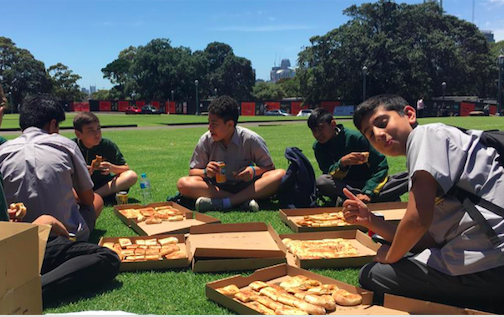
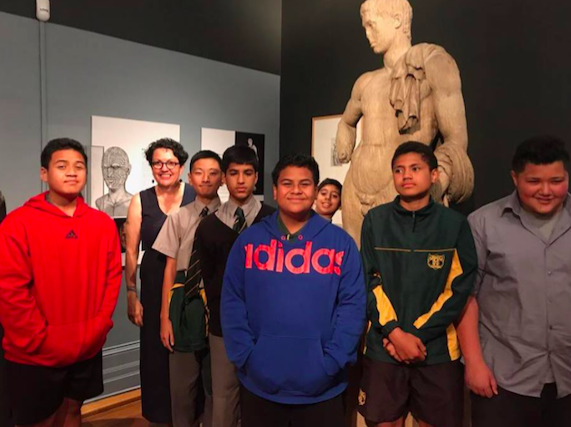
Historical Significance Reports for Items Donated to the Griffith Pioneer Park Museum
I didn’t realise how valuable the opportunity to reflect on this experience would be until I overcame the past few chaotic weeks leading up to the final submission of this project. While it has been far more pressure than I expected, I am truly appreciative of what I have learnt about Griffith and the importance of preserving local Australian history more generally as well as the historical skills I have developed as a result of conducting my own oral histories. I feel that my emotional engagement with the ethics of historical practice is greater as a result and that putting my academic skills to the test has made them far more suitable for various educational and historical functions beyond the university landscape.
My work with Bonnie and the Griffith Pioneer Park Museum has reminded me not only of my passion for curation but also of how important it is to preserve our local history. The site is responsible for preserving the agricultural, social and cultural heritage of Griffith and the surrounding Riverina region, an area I have come to realise through the process of interviewing for this project goes far beyond my knowledge of my own ancestral history in the town. While I was drawn to the organisation due to my personal connection to Griffith, it wasn’t until I read Beth Gibbings’ piece on SIEV X that I realised that it is possible to advocate for the significance of a historical place, event or object without being directly connected to it. While I agree with this, I do also feel that my connection to Griffith made my connection to the interviewees more natural.
I feel a great deal of responsibility knowing that Bonnie is relying on the quality of my academic skills to provide accurate information regarding three collections which have been recently donated to the museum: a cement mixer, optical equipment and telephone exchange equipment. I have worked hard and hope that the reports I have compiled are a reflection of this.
Bonnie’s obvious passion for history and its preservation has been inspiring over this semester. More than anything, I was appreciative of the opportunity to collaborate with someone who is a recent history graduate. Her drive to contribute her time and knowledge wholeheartedly to Pioneer Park has given me the confidence to pursue a career in a field where permanent jobs are often hard to come by, something that has previously intimidated me. While I came into this project being fairly inexperienced in the practice of oral history and interviewing, I am glad that I have pushed myself out of my comfort zone and believe that I have strengthened these skills as a result.
Riding For the Disabled (NSW)
For my project, I have been working with Riding for the Disabled (NSW), a not-for-profit organisation that provides people of all ages and varying disabilities, with the opportunity to ride and interact with horses. When we were asked to approach a community organisation, I immediately thought of Riding for the Disabled (RDA). As a member of the equestrian community in the Southern Highlands, the work that RDA does is very close to my heart and I have attended fundraising gymkhanas to support the organisation since I was four years old. I have been working with Riding for the Disabled (NSW) in a fundraising capacity however due to confidentiality considerations, I am unable to go into more detail about the specific nature of my project. So for this blog, I thought I would include an article I wrote about Riding for the Disabled, Moss Vale. I hope that through my work, I have contributed to the well-being of the Riding for the Disabled community. This unit and more specifically this project, has broadened my perspective on the nature of history significantly. Perhaps most importantly, it has opened my eyes to the dire need for the most vulnerable members of society to have their voices heard by the broader public.
RIDING FOR THE DISABLED- A CLOSER LOOK
By Mary Bokey
Last Wednesday I had the privilege of visiting the Fitzroy Equestrian Center to meet the members of Riding for the Disabled, Moss Vale. Riding for the Disabled (RDA) is a not-for-profit organisation, which gives people of all ages, with various disabilities, the opportunity to ride and interact with horses. It is a nationwide organisation split into state and local branches, and it provides vital physical and psychological therapy for its members.
Angus and Neatie Malcolm have been involved with Riding for the Disabled for over 40 years, and their hard work and dedication has positively influenced the lives of hundreds of people in the Southern Highlands community.
I arrived at the equestrian center to find Angus and a group of volunteers catching the ponies from the paddocks and saddling them up. A mix of men and women, young and ‘slightly older’, all the volunteers were friendly, cheerful and looking forward to a fun morning of riding.
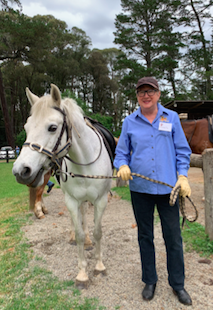
Pictured above: Regular volunteer, Narelle, waits for the riders to arrive with one of the lovely ponies at Fitzroy Equestrian Centre
After a brief group meeting, where Angus explained to the volunteers and students what they would be doing that day, the riders began to arrive. All the volunteers knew each rider by name and the genuine friendship between the riders and volunteers was evident.
I met Stephen, Louise, Sophie and Neil, who were all eager to find out who they were riding that day and get in the saddle. They were riding new horses that day, as their faithful mounts were out in the field having a well-deserved holiday.
I had the opportunity to talk for some time with Neil Macpherson about his journey with RDA Moss Vale. In 2015 Neil suffered a debilitating stroke. Sustaining severe neurological injury, doctors told him he might never walk again. Unwilling to accept this, Neil and his wife Toniann moved to the Southern Highlands, to begin a new life. Through intensive physical therapy he began to walk again and discovered a love of swimming. Then, when Neil heard about Neatie and Angus through a family friend, he decided to give riding a go, and he has never looked back. He said, “RDA has helped me to participate in a sport which is very well supervised by caring people whilst providing the highest level of safety. It has given me confidence and happiness throughout my recovery”. Physically, learning to ride has helped Neil regain his balance and muscular strength, and emotionally, the friendship and sense of community being a part of Riding for the Disabled has given him, has been invaluable.

Pictured above: Angus and the volunteers help Neil mount his horse
The sky grew ominously dark and rain started to fall, but nothing was going to put a dampener on the spirits of the volunteers or the riders. After all the riders were in the saddle, the group made their way to the indoor arena to begin their riding lesson. Each rider had one volunteer leading their horse, and another volunteer on the other side to provide additional support. They walked and trotted each way and practiced their steering by weaving through bending poles, before finishing up with a relay and a snail’s race. Sophie, who is learning to ride independently won the relay, and Louise won the snail’s race.
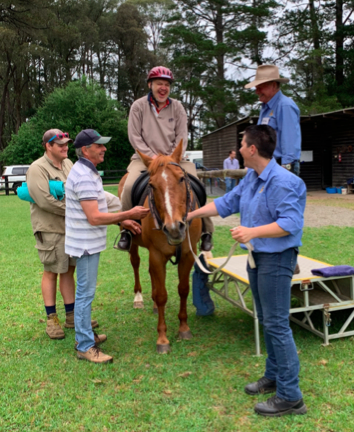
Pictured above: Stephen is thrilled to be back in the saddle and always brings an apple for his horse
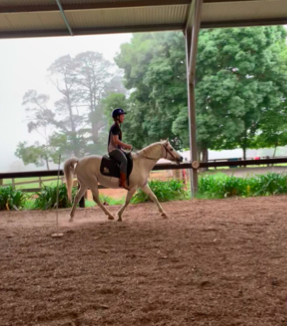
Pictured above: Sophie is learning to ride independently
When Neil, Sophie, Stephen and Louise had finished their lesson, I made my way back to the stables, where a group of younger riders had been given pony rides around the yard. The volunteers were delighted, because Josh had been too afraid to touch horses when he first started coming to RDA, but this week, he proudly smiled for the camera as he gave Benji the pony a big cuddle.
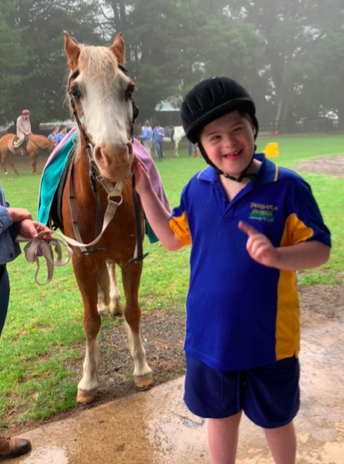
Pictured above: Josh making friends with Benji the pony
As I drove home, I reflected on what had been a truly humbling experience, watching people of all ages and backgrounds, brought together by a shared love of horses, to form a strong and vibrant community. The work that Angus, Neatie and all the volunteers at Riding for the Disabled Moss Vale do, enriches the lives of all the riders and their families, and I urge the community to get involved by volunteering or donating to this amazing organisation.
For more information head to the Riding For the Disabled NSW website at: https://rdansw.org.au/
Pittwater Pharmacy and Compounding Chemist – Not Just a Business but a Community Service
“We do what we do because we care. That’s the whole mission of our profession – to help people…”
– Andrew Snow, co-owner of Pittwater Pharmacy and member of the Papandrea Family
This project is the product of substantial soul-searching and a fortuitous epiphany – after several weeks of melancholy rumination upon my apparent lack of ‘belonging’, initiated by reflection upon the content of this course, I finally realised that I did have connections to a local community. This sense of attachment was discovered whilst enjoying a coffee at a café opposite a building I have known my entire life: Pittwater Pharmacy and Compounding Chemist. The pharmacy is a familiar landmark for the residents of Mona Vale village on Sydney’s Northern Beaches, the area where I spent my childhood before my parents moved back to New Zealand. Having been owned and run by the same Italian family, the Papandreas, for over forty years, the pharmacy boasts an impressively large and loyal clientele, with customers visiting from all over Sydney and even from interstate. Although I have known the Papandrea family since I was a baby, it dawned on me that I actually knew very little about their history. I decided I wanted to know more about this iconic small business and, in the process, create some sort of historical product that would convey how important and integral their work is to the community, both in the past and today. The pharmacy is far more than a business – it is a community service, providing uniquely personable and customised care to each and every one of its customers.
The role that the pharmacy plays in the local community is manifold. Not only do the Papandreas provide free medical and general life advice to members of both the Italian and non-Italian communities of the Northern Beaches, offering this advice to the former in their native tongue, but they also make regular donations to cancer foundations, give free talks on fall prevention, support local sporting events, sponsor the local primary school, donate to the local Catholic church, create hampers full of products that are then donated for events at the Mona Vale Surf Life Saving Club, and both compile and deliver medical Webster packs to clients free of charge. Considering the significant presence that the Papandrea family has in the community and the wide-reaching impact of their generosity, I believed it was important that they received recognition for the work they do. I would like to think that many of the pharmacy’s customers would be interested to learn about the family’s history, particularly about their immigration from Italy to Australia and how they came to open a family-run business in which the members’ ages range from 22 to 72 and where a third generation of Papandrea pharmacists is imminent.
The pharmacy’s clientele primarily consists of middle-aged and elderly customers, many of whom have been served by the Papandreas for several decades and whose children and grandchildren now visit the pharmacy. This demographic informed my decisions regarding the format and presentation of my historical project. In order to engage both younger and older members of the community, I decided to make an information booklet which would be available as both a hard-copy from the pharmacy and as an online PDF, accessed through a link on the pharmacy’s functioning website (URL: https://www.pittwaterpharmacy.com.au/). Moreover, as I wished to focus on the family itself, the majority of the booklet consists of interview excerpts. By providing these intimate glimpses into the Papandreas’ personal history, rather than merely recounting a factual history of the area, I hoped that my intended readers’ engagement with the content would be enhanced considering their individual connections to the family.
s
Given the highly personal nature of the project, the foundation of my research was the collection of oral histories from four members of the Papandrea family and four members of the general public. This was achieved by using my iPhone to record interviews, followed by a combination of manual and assisted online transcription. Although I mainly utilised individual interviews, I also facilitated several group interview settings which were highly beneficial as interviewees were able to supplement each other’s recollections and thereby provide a more complete retelling of the past. The individuals I interviewed were generous with their time, for which I was very grateful; although it has been a challenging undertaking to present these oral histories in a condensed form, it was a privilege to listen to their diverse insights. I have had to be selective with the excerpts used in the booklet – with almost five hours of audio recordings, I initially felt too overwhelmed to commence the transcription and dissemination processes. However, through persistence and determination, I was able to select critical segments that most accurately reflected the Papandreas’ immense generosity and the contributions they have made to the Northern Beaches community.
While the booklet does contain a substantial amount of information, the text has been intentionally interspersed with images, kindly supplied by the Papandrea family. The choice of font and font size was deliberately selected to maximise the booklet’s readability. Furthermore, the booklet’s layout has been designed to not only convey the pharmacy’s historical origins, but to also emphasise the services it provides today. This pro bono work is what makes the pharmacy unique – the level of personalised care that all customers receive, regardless of whether they are a first-time visitor or have been coming to the pharmacy for decades, is hard to find anywhere else. This is particularly pertinent in the contemporary climate where big-chain pharmacies increasingly dominate the pharmaceutical field and threaten to overwhelm small businesses. However, the Papandreas are highly philosophical about this. They know that they will always have to compete with these larger businesses, especially in terms of ‘budget’ pricing, but that will not stop them from providing the exceptional level of individual care they are known and valued for.
Pittwater Pharmacy Website URL: https://www.pittwaterpharmacy.com.au/
